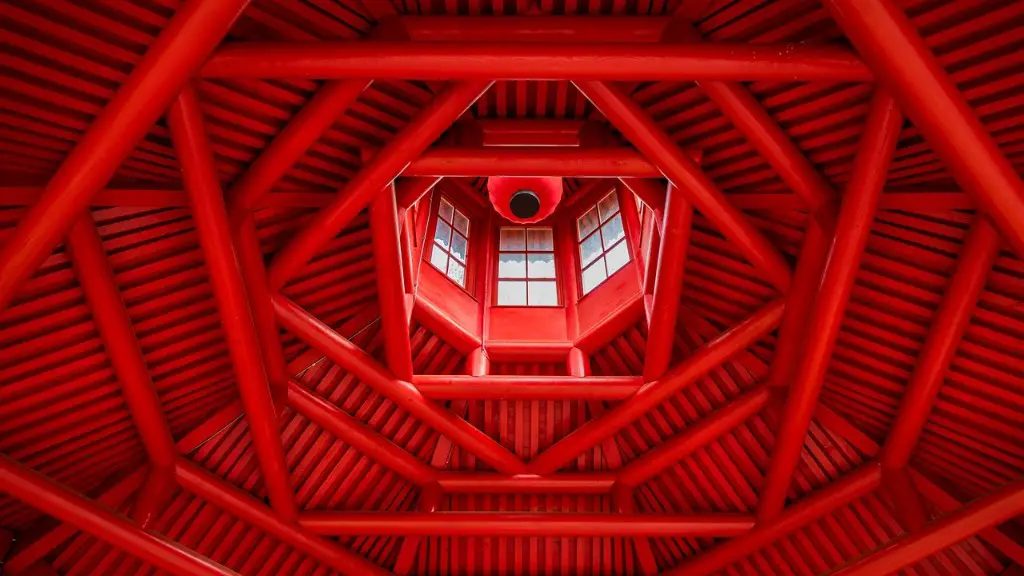Architecture Impacting People’s Emotional Response
At its core, architecture is not only about construction. It serves to make a connection between people. While building structures come with their practical, functional value to a culture, there is so much more to consider in terms of their societal impact. The architecture of a given place speaks to the identity, the ethos, and the cultural traditions of those living there, raising it to something more than the sum of its parts.
When humans look around their environment, they tend to subconsciously get a sense of what all the components are telling them. This phenomenon, otherwise known as environmental psychology, is based on the notion that physical spaces are as much a part of someone’s identity as their behaviors and thoughts. The buildings, sculptures, roads, and parks of a town or a city are all reflections of its history, its culture, and its values. As such, they have a great influence on how the inhabitants of a place view themselves, as well as how they present themselves to the world beyond.
For example, the architecture in Paris is said to be a symbol of romance and sophistication. The grandeur of the Eiffel Tower and the beauty of the Champs-Élysées makes Paris one of the most popular tourist destinations in the world. This type of architecture has a powerful visual effect on people, eliciting an emotional response that has become associated with the French culture.
The concept of “place-making” or creating a space that speaks to its inhabitants is another common way architecture influences culture. Through the process of place-making, artists can create a unique aesthetic that reflects the values, history, and identity of a place. A prime example of this is the Spanish city of Seville. Seville’s distinctive architecture, such as the ornate Arabian-style courtyards, is renowned for creating a sense of warmth and joy among its residents. This type of architecture also serves to draw in tourists and help boost the economy of the city.
Design of a Building Influencing its Use
Just as the design of a building can influence the people in the area, it can also influence the way people use a space. This idea is known as “form follows function”, and it suggests that the design of a building should be based around its purpose. For instance, a church has tall spires that act as a reminder of its religious significance. Similarly, a library should look inviting so as to encourage visitors to come in and explore its resources.
This concept ties back to the notion of place-making; the goal is to create a living, breathing space that can be used for a variety of purposes. Take for instance, the hotel lobbies of the 20th century. Instead of just being used for check-ins and check-outs, lobbies became multi-functional spaces for people to spend their leisure time and socialize. This transformation of the lobby’s purpose is said to have had a significant impact on the culture of the time, as it helped spur on the development of a service industry that allowed people to connect with others in more meaningful ways.
Style of Architecture Demonstrating Wealth and Power
Another key way architecture can influence culture is the way it reflects values and attitudes. Generally, what is considered aesthetically pleasing changes over time due to shifts in styles and preferences. These shifts can have complex cultural implications, as certain designs may be favored over others due to their implications of wealth or power. A prime example of this is the French Renaissance-era chateau, with its asymmetrical towers and ornate trim. This type of architecture was favored by the wealthy elite of the time, and it became an aspirational symbol of success among the middle and lower classes.
The use of modernist architecture can also be seen as a way of displaying power, as its sleek, minimalist ethos was a sign of its user’s ability to embrace the future and push boundaries. This type of architecture was once quite controversial, but its influence grew as time went on and it soon became the go-to style for those who wanted to make a statement. In other words, architecture can serve as a symbol for its user’s position within the cultural milieu.
Architecture Steeped in Social Dynamics
In addition to its aesthetic and scholarly implications, architecture also speaks to societal dynamics. This can include movements such as gentrification, or altering an area to cater to a wealthier demographic. It can also involve deconstructing existing architectural sites in order to make way for new developments, which can result in displacement of its inhabitants.
Architecture can also be used to represent certain ideals and ways of thinking, such as sustainable design. For example, the German government recently created a “living laboratory” in order to test innovative ideas regarding green architecture. This initiative seeks to push the boundaries of sustainable living, encouraging others to start thinking about ways in which they can reduce their impact on the environment.
Architecture Reflecting Cultural Relevance
A building’s design can influence the way we interact with other people, as well as the way we view and interpret the world. This is especially true in the case of communal spaces, as they are often focal points for social change and innovation. Take for instance, New York City’s High Line. While this park was originally seen as an eyesore due to its industrial-like structure, it has since been transformed into a vibrant green space that celebrates the city’s cultural diversity and emphasizes the importance of public space.
As mentioned earlier, place-making techniques are important for creating spaces that are reflective of their inhabitants. However, this goes beyond just the aesthetic aspect; it also includes access and functionality. For instance, there has been a push in recent years for more accessible public spaces, such as wheelchair ramps, accessible restrooms, and step-free entrances. These design elements play a role in creating a more inclusive environment, allowing all users to feel at ease and welcome.
Impact of Digital Age on Architecture
The advent of the digital age has also had a significant impact on architecture. Today, 3D design programs such as SketchUp are allowing architect to visually demonstrate the impact of their work. These tools, as well as virtual reality, are making it easier for architects to envision how the design of a building or landscape could affect how people interact with it.
Additionally, due to the rise in technology, architects now have access to more data than ever before, allowing them to make more informed decisions in terms of sustainability and resource efficiency. With advanced computational models, architects now have a better understanding of the climate in which they’re building, and they can use this data to create structures that are more resilient to changes in the environment.
How Landscape Architects Influencing Culture
The profession of landscape architecture is often overlooked but has a significant impact on culture and the environment. Landscape architects have historically placed an emphasis on the natural environment, creating gardens and open spaces that offer respite and beauty. However, in recent years, the focus has shifted to sustainability and how these spaces can be used to create greater resilience and reduce the urban ‘heat island’ effect.
By using native plants and rain gardens, landscape architects are able to create spaces that require minimal maintenance and provide refuge for wildlife. Furthermore, these spaces often serve as places for the community to gather, providing a place for people to interact, find solace, and experience nature.
Impact of Architecture on Urban Sprawl
The way architecture can shape cities is often seen in the form of “urban sprawl”. This term refers to the unchecked growth of cities, as they become increasingly sprawling and disconnected. This often occurs when there is a lack of well-planned structures, as the development of commercial and residential buildings can have a damaging effect on the natural landscape.
The effects of urban sprawl can be seen both aesthetically and psychologically, as it often leads to an increase in air and noise pollution, creating a sense of disconnection between people. This can be avoided through the use of more efficient, community-focused designs, such as urban farming projects and communal spaces. These types of projects allow people to connect with each other and their environment in new and meaningful ways, helping to create a sense of community.
Cultural Changes Reflected in Buildings
As cultures evolve, so does the architecture of its people. As our societies become more diverse and technologically advanced, the way we view our environment and ourselves has also changed. This is reflected in the buildings that are erected, as architects are increasingly being tasked with creating structures that are more sustainable, efficient, and accessible.
In addition, we are also seeing a renewed focus on preserving the cultural and historical significance of certain places. In cities such as Rome, where the past is so deeply embedded in the culture, architects are creating buildings that pay homage to its history, while also incorporating modern designs and materials. This is a testament to the fact that architecture has the power to shape our view of ourselves and our environment for the better.
Architectural Monuments as Symbol
In many cases, architecture can also be seen as a symbol of power and strength. For instance, some countries may choose to erect imposing monuments to commemorate particular events or individuals. This is seen in places like Washington DC, which is home to iconic landmarks such as the White House and the Washington Monument, both of which reflect the nation’s political influence and prestige.
Other countries have used monumental architecture to demonstrate their resilience and strength in the face of great tragedy. An example of this is the reconstructed Temple of Jupiter in Lebanon, which was destroyed during the Lebanese civil war but was later rebuilt to serve as a symbol of hope and unity.
Architecture as Political Tool
Lastly, architecture can also be used as a political tool, as certain structures may represent certain ideologies. This is seen in authoritarian regimes, where the construction of monumental structures serves to remind citizens of the government’s power and control. As such, architecture can be used to convey a particular message or shift in public opinion.
It is clear that architecture has the power to shape our environment, our identity, and our view of the world. By examining how our built environment can influence our perception and behavior, we can better understand the role architecture plays in our culture.


